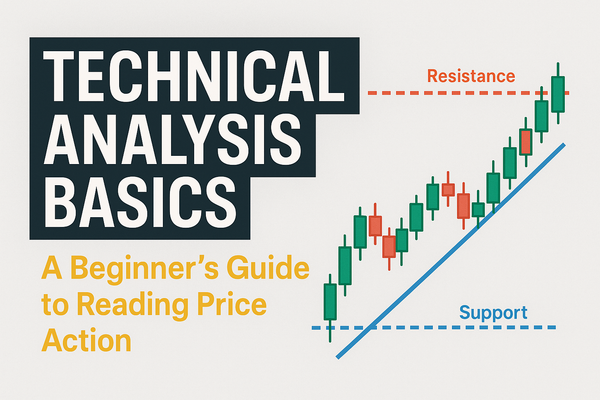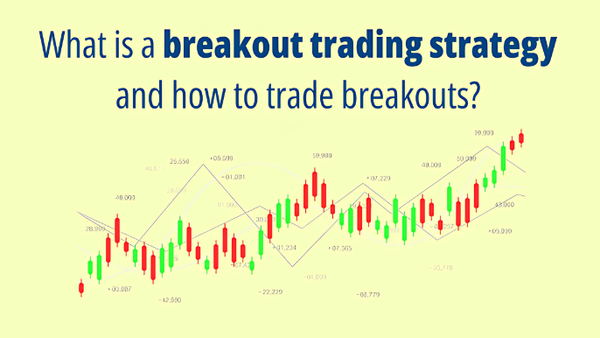5 Beginner Trading Strategies You Can Start Using Today
I’ll explain five beginner trading strategies that helped me gain confidence and avoid rookie mistakes. These aren’t magic formulas, but they’re proven, practical, and something anyone can start using today.

"Every pro was once an amateur. Every expert was once a beginner." — Helen Hayes
When I first got into trading, I was overwhelmed by charts, news, and a flood of unfamiliar terms. Everyone seemed to have a “system,” and it felt like I was already late to the party. But here’s the truth: you don’t need a complicated strategy to start trading—you just need a smart, simple plan.
In this post, I’ll explain five beginner trading strategies that helped me gain confidence and avoid rookie mistakes. These aren’t magic formulas, but they’re proven, practical, and something anyone can start using today.
Key Takeaways
- You don’t need to master every strategy — pick one that suits your personality and schedule.
- All strategies require risk management; no strategy wins 100% of the time.
- Backtesting and demo trading are key before using real money.
- Emotional control often matters more than strategy choice.
- Keep a journal to track which strategies work best for you.
Strategy #1: Start with Paper Trading
(Risk-Free Practice Before You Go Live)

One of the best beginner trading strategies is to start with paper trading—a fancy term for simulated trading with no real money on the line.
I can’t stress this enough: paper trading saved me from making expensive mistakes early on. Platforms like TradingView or ThinkorSwim let you test trades in real time using real market data, just without the financial risk.
Think of it like a flight simulation for traders. You're learning how the market moves, how to place orders, and how your emotions react—all without losing a dime.
Tip: Treat it seriously. Use it to test your trading strategies for beginners, track your results, and refine your process. You’ll feel more prepared to step into real trading when you're consistently profitable on paper.
Strategy #2: Focus on One Market
(Clarity Beats Chaos)
Jumping between stocks, crypto, forex, and options might feel exciting, but it often leads to confusion. As a beginner, the smartest move I made was to focus on one market and learn it inside out.
For me, it was crypto. I picked Bitcoin and Ethereum, studied how they moved, and tracked them daily. I wasn’t trying to chase every trend—I was learning market structure, price behavior, and volume patterns.
Just like learning a new sport, you get better by focusing on your practice. One ball. One court. Master that first.
This also pairs well with other concepts, like How to Read Candlestick Patterns, which becomes much easier when you're watching one asset consistently.
Strategy #3: Use Simple Technical Indicators
(No Need to Overload Your Chart)
If you're looking for the easiest trading strategy to get started, try this: Use just one or two indicators.
For beginners, I always recommend starting with:
- RSI (Relative Strength Index) – Tells you if an asset is overbought or oversold.
- Moving Averages (like the 50-day MA) – Helps you spot trends easily.
Let me break it down simply:
- If RSI is above 70, the asset might be “overheated” and could pull back.
- If the price is above the 50-day MA, it’s likely in an uptrend.

Example: Imagine you’re watching Bitcoin. It’s above the 50-day MA, and RSI just crossed 75. That could mean the price is stretched and may cool off soon.
Keep it simple. Avoid loading 10 indicators on your chart. The best setups are often the cleanest.
Want to take this further? Check out my guide on the RSI Indicator Made Simple.
Strategy #4: Stick to a Beginner Trading Plan
(Because Random Trading = Random Results)
One of the most powerful habits I built early was creating a beginner trading plan—even if it was just a one-pager in Google Docs.
Here’s what mine included:
- Entry Rules (What needs to happen for me to enter a trade?)
- Exit Plan (Where do I take profits?)
- Stop Loss (How much am I willing to lose?)
- Risk Per Trade (Usually 1–2% of my total capital)
Example: “If Ethereum breaks above resistance with volume and RSI is below 70, I’ll enter. Stop loss at -2%, target at +4%.”
Having a written plan helps eliminate emotion. You’re not guessing, you’re following rules. As I learned in Mastering Risk Management, it's not about winning every trade—it's about protecting your capital long enough to grow.
Strategy #5: Trade with the Trend
(Don't Be a Hero—Follow the Flow)
Here’s one of the most basic day trading strategies that still works wonders: Trade with the trend.
Trying to catch tops and bottoms is tempting, but it's risky. Instead, ride the wave. If the market is going up, look for buying opportunities. If it’s heading down, avoid long positions.

Example: If you notice that Apple has made higher highs for the past 3 days and volume is rising, that’s a potential confirmation of an uptrend.
You don’t need to predict the market. You just need to react smartly to what it's showing you. This approach is foundational to many other concepts like Breakout Trading or identifying Institutional Order Flow.
Common Pitfalls to Avoid
Many beginners fall into traps that have nothing to do with strategy quality. Watch out for these:
- Overtrading: Don't enter trades just to stay active. Fewer quality trades are better.
- No Stop Loss: Always use a stop loss. Even a great setup can fail.
- Chasing Price: Wait for the setup. Don’t FOMO into a trade mid-run.
- Ignoring News: A surprise event can ruin a good technical trade. Check the calendar!
- Not Journaling: Without notes, you won’t know what to fix or keep doing.
Final Thoughts + Takeaway
(Mindset First, Money Second)
If you're serious about trading, start small and stay consistent. The best traders I’ve met aren’t just good with charts—they’re good at managing themselves.
Let’s recap:
- Start with paper trading to build skills without risk.
- Focus on one market to avoid information overload.
- Keep it simple with basic indicators.
- Write and follow a clear trading plan.
- Always trade with the trend, not against it.
Above all, remember: Discipline beats strategy in the long run. The best beginner day trading strategies are the ones you can stick to and improve over time.
Try one of these strategies this week. Journal your results. Stay patient, and keep learning. You’ve got this.
Frequently Asked Questions (FAQs)
1. Which beginner strategy has the best win rate?
There’s no universal answer, but support/resistance and moving average strategies often give clearer setups for beginners.
2. Can I use these strategies on any timeframe?
Yes, but longer timeframes like 1-hour and above are usually better for beginners because they’re less noisy.
3. How do I know if a strategy works for me?
Try backtesting or paper trading it for 30–50 trades. Track your results and see if it fits your lifestyle and mindset.
4. Should I use indicators or price action only?
Start with one or two indicators, like RSI or moving averages, and combine them with price action for balance.
5. How many strategies should I trade at once?
Just one in the beginning. Master it before adding more. Overloading yourself slows down your learning.




